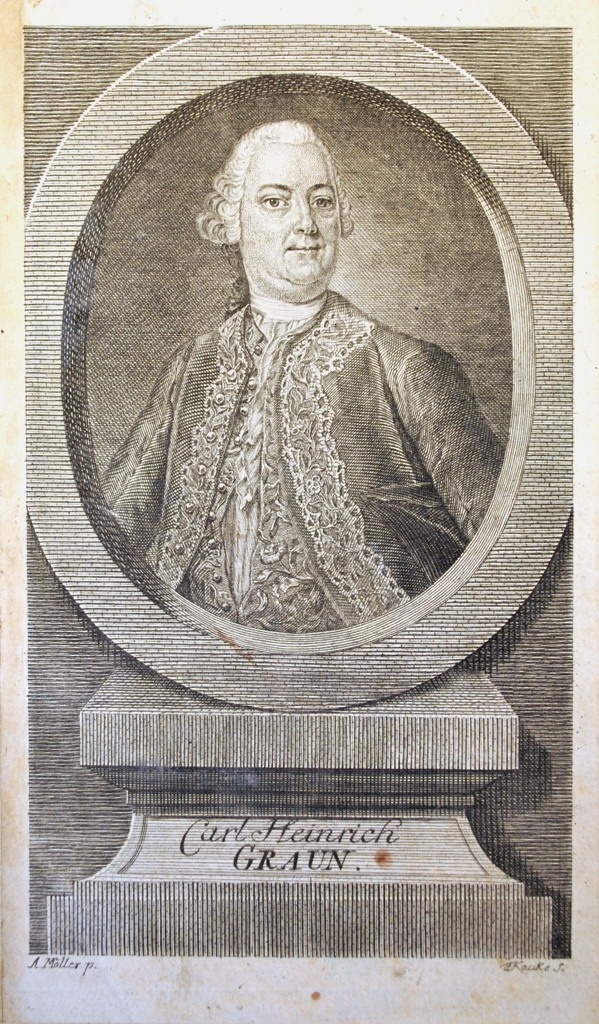Der spätere Kapellmeister Carl Heinrich Graun wurde 1704 in Wahrenbrück (Sachsen) geboren und besuchte ab 1714 die Kreuzschule in Dresden. Nach einer Anstellung in Braunschweig wurde er 1740 durch König Friedrich II. von Preußen (1712-1786) als Kapellmeister nach Berlin berufen, wo er zahlreiche Opern komponierte. Sein Bruder Johann Gottlieb Graun (1703-1771) wirkte ab 1726 als Kapelldirektor am Merseburger Hof, bevor er seinem Bruder als Konzertmeister nach Berlin folgte.
Der Kupferstich zeigt ein Porträt Grauns als Brustbild in einem ovalen Rahmen. Er trägt eine Perücke und Kleidung im Stile des Rokoko. Der Rahmen steht auf einem Sockel mit der Legende: "Carl Heinrich GRAUN".
en

